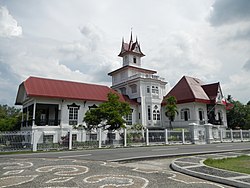
Emilio Aguinaldo y Famy was a Filipino revolutionary, politician, and military leader who is officially recognized as the first and the youngest President of the Philippines (1899–1901) and the first president of a constitutional republic in Asia. He led Philippine forces first against Spain in the latter part of the Philippine Revolution (1896–1898), then in the Spanish–American War (1898), and finally against the United States during the Philippine–American War (1899–1901).

Cavite, officially the Province of Cavite, is a province in the Philippines located in the Calabarzon region in Luzon. Located on the southern shores of Manila Bay and southwest of Metro Manila, it is one of the most industrialized and fastest-growing provinces in the Philippines. Its population of 3,678,301 (2015) makes it one of the most populated provinces in the country. Originally agricultural and now a booming bedroom community for ultracongested Metro Manila, its location just north of Taal volcano poses significant risks of ashfall, and debris flows through it into Manila Bay.

Calabarzon, formally known as the Southern Tagalog Mainland, is an administrative region in the Philippines, designated as Region IV-A. The region comprises five provinces: Batangas, Cavite, Laguna, Quezon, and Rizal and one highly urbanized city, Lucena. The region is the most populous region in the Philippines according to the Philippine Statistics Authority, having over 14.4 million inhabitants in 2015, and is also the country's second most densely populated after the National Capital Region.

Tagaytay, officially the City of Tagaytay, is a 2nd class city in the province of Cavite, Philippines. According to the 2015 census, it has a population of 71,181 people.

Bacoor, officially the City of Bacoor, is a 1st class city in the province of Cavite, Philippines. According to the 2015 census, it has a population of 600,609 people, making it the 14th most populous city in the Philippines.

Cavite City, officially the City of Cavite, is a 4th class component city in the province of Cavite, Philippines. According to the 2015 census, it has a population of 102,806 people.

Magdalena, officially the Municipality of Magdalena, is a 4th class municipality in the province of Laguna, Philippines. According to the 2015 census, it has a population of 25,266 people.

Maragondon, officially the Municipality of Maragondon, is a 3rd class municipality in the province of Cavite, Philippines. According to the 2015 census, it has a population of 37,720 people. The town is famous for its bamboo crafts, Mounts Palay-Palay–Mataas-na-Gulod Protected Landscape which includes Mount Pico de Loro, and various ancestral houses and structures important to Philippine history and culture such as Maragondon Church and the execution site and trial house of national hero Andres Bonifacio.

Imus, officially the City of Imus, is a 3rd class city and capital of the province of Cavite, Philippines. According to the 2015 census, it has a population of 403,785 people.
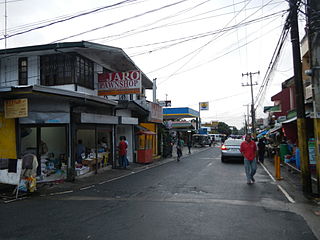
Alfonso, officially the Municipality of Alfonso, is a 1st class municipality in the province of Cavite, Philippines. According to the 2015 census, it has a population of 51,839 people.

General Trias, officially the City of General Trias, is a 1st class city in the province of Cavite, Philippines. According to the 2015 census, it has a population of 314,303 people.

Trece Martires, officially the City of Trece Martires, is a 4th class city and the de facto capital city of the province of Cavite, Philippines. According to the 2015 census, it has a population of 155,713 people.
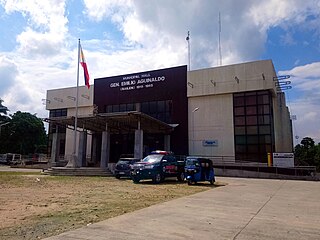
General Emilio Aguinaldo, officially the Municipality of General Emilio Aguinaldo, is a 5th class municipality in the province of Cavite, Philippines. According to the 2015 census, it has a population of 22,220 people.

Mendez, officially the Municipality of Mendez-Nuñez, is a 4th class municipality in the province of Cavite, Philippines. According to the 2015 census, it has a population of 31,529 people.

Naic, officially the Municipality of Naic, is a 1st class municipality in the province of Cavite, Philippines. According to the 2015 census, it has a population of 111,454 people. Naic has a land area of 76.24 square kilometers.
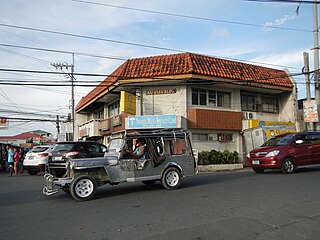
Noveleta, officially the Municipality of Noveleta, formerly known as Tierra Alta during the Spanish colonial era is a 3rd class municipality in the province of Cavite, Philippines. According to the 2015 census, it has a population of 45,846 people.

Silang, officially the Municipality of Silang, is a 1st class municipality in the province of Cavite, Philippines. According to the 2015 census, it has a population of 248,085 people.
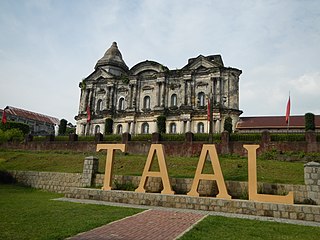
Taal, officially the Municipality of Taal, is a 3rd class municipality in the province of Batangas, Philippines. According to the 2015 census, it has a population of 56,327 people.

The Battle of Binakayan-Dalahican was a simultaneous battle during the Philippine Revolution that was fought from November 9–11, 1896 that led to a decisive Filipino victory. The twin battle took place at the shores of Binakayan, in the town of Cavite Viejo ; Dalahican and Dagatan in Noveleta; and, to minimal extent, in Imus and Bacoor towns in Cavite province, Philippines that lasted for two days before the Spanish army retreated demoralized and in disarray. The result of the battle was the first significant Filipino victory in the country's history.

St. Mary Magdalene Church of Kawit, also known as Kawit Church is the parish church of the municipality of Kawit, Cavite in the Philippines. The Roman Catholic church is one of the oldest churches in the Philippines, construction of the present church was started in 1737. The church was last restored in 1990 by the citizens of Kawit.
